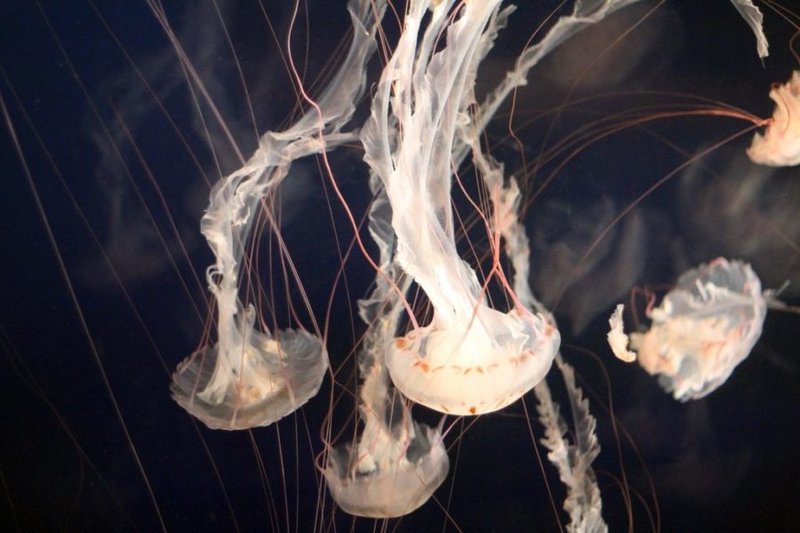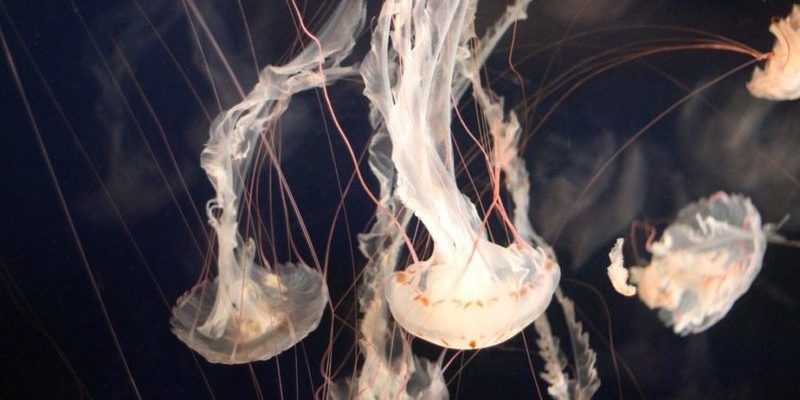
Imagine stepping into a sauna; the air is thick and warm, and it’s uncomfortable for long-term staying. The same kind of discomfort is happening in our oceans. Box jellyfish, which thrive in warm waters, are experiencing shifts in their habitat. As temperatures rise, understanding how these changes affect their behavior, reproduction, and distribution is essential. Let’s dive deeper into the world of the box jellyfish and how climate change is creating waves in their lives.
Understanding Box Jellyfish: An Overview
Box jellyfish, scientifically known as *Chironex fleckeri*, are notorious for their stunning appearance and potent sting. They are typically found in warm coastal waters of the Pacific and Indian Oceans. These creatures are unique in that they have a box-shaped bell and long tentacles that can reach over 10 feet! Despite their beauty, their sting can cause severe pain or even be fatal to humans. But beyond their fearsome reputation, what makes them so interesting is that they’re a part of a much larger ecosystem.
These jellyfish tend to thrive in environments rich in nutrients, often resulting from warmer waters. Their diet mainly consists of small fish and plankton, which they capture with their tentacles. So, the health and abundance of their food sources are closely linked to ocean health, making them indicators of marine ecosystem conditions. With climate change impacting the ocean, it’s vital to consider how these factors intertwine.
The Impact of Rising Ocean Temperatures
One of the most serious effects of climate change is the increase in ocean temperatures. *Box jellyfish* prefer warmer waters, but there’s a tipping point. Historically, their populations have thrived in temperatures ranging from 70°F to 80°F, but as waters climb above this range, their survival and reproduction can be adversely affected.
Warmer waters can lead to synchronized spawning events where large numbers of jellyfish reproduce at once. While this might seem beneficial for the jellyfish population, it can overwhelm local ecosystems. Overpopulation can lead to a decrease in available food, interrupting the balance in marine life. Moreover, excessive jellyfish blooms can disrupt fishing industries and even damage local coral reefs.
Changes in Distribution and Migration Patterns
You might be wondering how climate change influences where box jellyfish choose to live. As ocean temperatures rise, these jellyfish are expanding their habitats. They’re starting to appear in areas where they have rarely been seen before, often moving into colder waters.
This shift not only affects local ecosystems but also endangers human populations in regions where people are unaccustomed to their presence. For instance, as more box jellyfish make their way to new shores, beachgoers may be at greater risk of encountering these stinging creatures if they venture into the water unprepared.
Altered Food Sources and Competition
The health of box jellyfish is also tied to the availability of their food sources, which primarily include zooplankton and small fish. Climate change affects the abundance and distribution of these species as well. Warmer waters change the patterns of marine life, often pushing these food sources into deeper or cooler waters.
This not only makes it harder for box jellyfish to find food, but they’ll also compete with other species for the same resources. As marine ecosystems change, some animals adapt better than others, which could create imbalances. For example, if small fish populations decline because of warmer conditions, jellyfish might face starvation, affecting their growth and reproduction rates.
Effects of Ocean Acidification
Climate change doesn’t only warm our oceans; it also causes them to become more acidic. Ocean acidification occurs as the ocean absorbs excess carbon dioxide, which can lead to a harmful ripple effect on marine life. Here’s the thing: while box jellyfish seem resilient to some changes, increased acidity can negatively impact their ability to reproduce and develop from polyps to mature jellyfish.
Acidified waters can affect the sensitivity of their stinging cells, known as nematocysts, impacting their effectiveness as hunters. This, in turn, could influence their role in the food chain and throw their ecosystem off balance.
The Socioeconomic Impact of Box Jellyfish
Now, let’s connect the dots between box jellyfish and humans. As we’ve seen, these creatures are significant to the health of marine ecosystems. But their increasing presence can also have economic implications. For coastal communities that rely on fishing and tourism, a rise in jellyfish populations can be a nightmare.
Imagine a family planning a beach vacation, looking forward to swimming and enjoying the sun. If box jellyfish are spotted in droves, their excitement quickly turns to fear. This scenario can affect business for local hotels, restaurants, and tour companies. Over time, the presence of these jellyfish can alter the economic landscape of coastal regions.
Conservation and Future Outlook
As climate change continues to affect our oceans, conserving marine life like box jellyfish becomes ever more crucial. Understanding their habitat needs protects not just the jellyfish but the broader marine ecosystem that relies on a delicate balance.
Agencies and organizations are working on conservation strategies that focus on sustainable practices. Reducing carbon emissions, improving water quality, and protecting natural habitats are all part of the solution. It’s a tall order, but every effort counts. Individuals can also play a role by advocating for policies that protect marine environments.
In summary, the story of the box jellyfish and climate change is a fascinating one. As we recognize these creatures’ importance, we learn just how interconnected our world is—how the health of our oceans reflects back on us.
In the end, protecting the box jellyfish is about more than just saving a single species; it’s about ensuring a thriving ocean teeming with life. So, maybe the next time you think of box jellyfish, you’ll also think of the bigger picture—the health of our oceans hangs in the balance.

